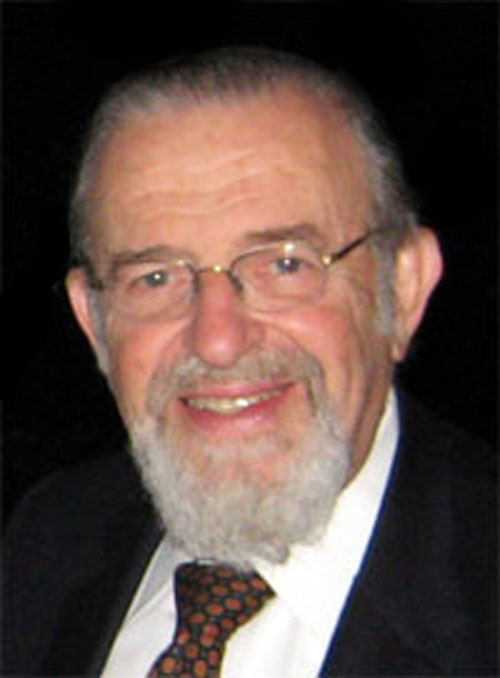Kosher Bookworm: sitting at the master's seder: learning from Rabbi Lamm
The Kosher Bookworm
Issue of March 5, 2010/ 20 Adar 5770Reviewing a commentary on the Pesach Haggadah by a former teacher of mine is a daunting task. But, when that rebbe was Rabbi Dr. Norman Lamm the task easily becomes an honor and labor of love.Titled “The Royal Table” and edited by Dr. Joel Wolowelsky, a dean of the Yeshiva of Flatbush, this Haggadah easily fits into the mold of all the classical Haggadah commentaries that have so elegantly graced seder tables for over two millennium. Published by The Orthodox Union and Ktav Publishing, this Haggadah consists of various Divrei Torah, sermons and articles drawn from the vast literary repertoire of Rabbi Lamm’s 60 year rabbinic and teaching career. According to its editor, the selection was intimidating but achievable. Every section of the Haggadah was to be given the “Lamm treatment”, with grace and eloquence at every turn of the page.
The English is exquisite and the content both meaningful and memorable.
Dr. Wolowelsky’s assessment of this work is right on the mark.
“Rabbi Lamm has a way of touching the soul with his eloquence of expression and depth of thought. For decades, he helped his congregants and students better appreciate our religious tradition and history, and this was an opportunity to bring those insights relating to the Pesach rituals to a wider audience.”
“Using this Haggadah will surely give pause to the seder because people will constantly be saying, “Wait a minute, I want to read this beautiful teaching to you!’ “
Born in Brooklyn in 1927 and educated at Yeshiva Torah V’das and Yeshiva University, Rabbi Lamm was to formulate a coherent advocacy of the Torah Umaddah philosophy that is his historic legacy in both Jewish thought and theology.
This synthesis of theological and philosophical opposites was reflected in his Ph.D dissertation on the contrasts of the hashkafot of the Ba’al haTanya and Reb Chaim of Volozhin. This trailblazing work was to form the basis of his course at Yeshiva University that I had the honor of attending the 1960’s. The course opened my eyes to the greatness of both Chabad chassidus and Reb Chaim’s misnagid hashkafah. These were lessons that were never to be forgotten and helped define my own religious outlook.
This Haggadah in both its style and content bring the philosophy of Torah Umaddah to the seder table and enables those who have assimilated its teachings and messages to better appreciate the Exodus experience.
The influence of previous historical as well as generational experiences is noted by Rabbi Lamm in his introductory remarks:
“The memory I most cherish was that of Zeyde who chanted certain passages of the Haggadah in the melodies of his Hasidic home before World War One. His face beamed when he had us, his American-born grandchildren, sing along with him.”
Further on Rabbi Lamm relates the applicability of the Exodus saga to humanity’s struggle for liberty and freedom.
“In England in 1297, in the famous Magna Carta, the ancient historic charter of liberties was guaranteed by the [English] king to his subjects. In the Constitution of the United States in 1790, it was not the king but the people who granted rights to themselves by the establishment of a government by and for ‘We the People’ “
By contrast Rabbi Lamm notes that “In Judaism, the rights of the people of Israel were and are granted to us not by presidents or kings or even the citizens - but by the Almighty who freed us from slavery in Egypt and revealed to us the Torah at Sinai over 3000 years ago.”
This confluence of images and cultures were to color Rabbi Lamm’s outlook on how to interpret the Jewish religious tradition within the context of 20th century. The sensitivity that his Zeyde evinced at the mention of the slavery experience was to be forever etched in Rabbi Lamm’s memory. And these memories, together with his deep love and appreciation for the American political tradition, served as a source of inspiration and succor in the long days as he served both the Jewish community at his Manhattan west-side shul and the Jewish community world-wide as president of Yeshiva University. This is a legacy that, through this Haggadah, the American Jewish community will come more to appreciate in the many years to come.
More Jewish Book News
I was happy to learn recently that Koren Publishers of Jerusalem has become the publisher of The Steinsaltz Editions of the Talmud and of the other works by Rabbi Adin Steinsaltz. By November 2010, Koren will complete the final volumes of the all-Hebrew commentary that was 45 years in the making. This effort will be recast as The Koren Talmud with the Steinsaltz commentary and translation opposite the classic Vilna Shas page.
It is my hope that eventually the English version of this work will also soon continue to its completion after an unfortunate lapse of time.

 72.0°,
Partly Cloudy
72.0°,
Partly Cloudy 







